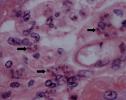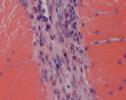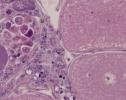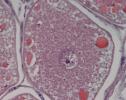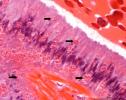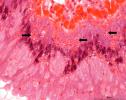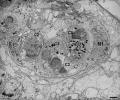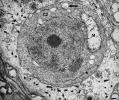View Record
856
Cancer pagurus
Crab, Edible Or Brown
Paramarteilia canceri
Connective tissue
Paramarteilia canceri
Paramarteilia canceri
Metazoan parasite characterised by the production of variable numbers of ‘daughter cells’ formed by endogeny within a primary cell, leading via a series of further cell divisions to the formation of spores
Feist, S.W, Bateman, K.S., Longshaw, M., Stentiford, G.D., Hine, M. (2008) Paramarteilia canceri n. sp. (Paramyxea:Marteiliidea) in the European edible crab (Cancer pagurus). In preparation.
Mortalities unknown as newly emerged disease. External signs of infection were absent although crabs harbouring the infection were lethargic and unresponsive.
Developmental stages of P. canceri appear to be systemic, being detected in several organs and tissues including the hepatopancreas, gill, heart, skeletal muscle, tegmental gland and gonads as well as within congested haemal sinuses. Most parasites were seen in the hepatopancreas where they induced an inflammatory response comprising of an influx of hemocytes and fibroblast-like cells eventually resulting in encapsulation
Guernsey
English Channel
UK
K. S. Bateman
11/13/2001


